Mt Shasta and the redwoods
Mt. Shasta rises from the flatlands of northern California like a protective mother looking after her brood far below. It is a perfect conically-shaped volcanic mountain, at 14,100 feet (4300 metres) one of the highest in continental United States, formed over hundreds of thousands of years and still considered active. Mt. Shasta is visible for 100 miles on a clear day, one of the most awesome stand-alone mountains imaginable. Mt. Shasta is a pearler.
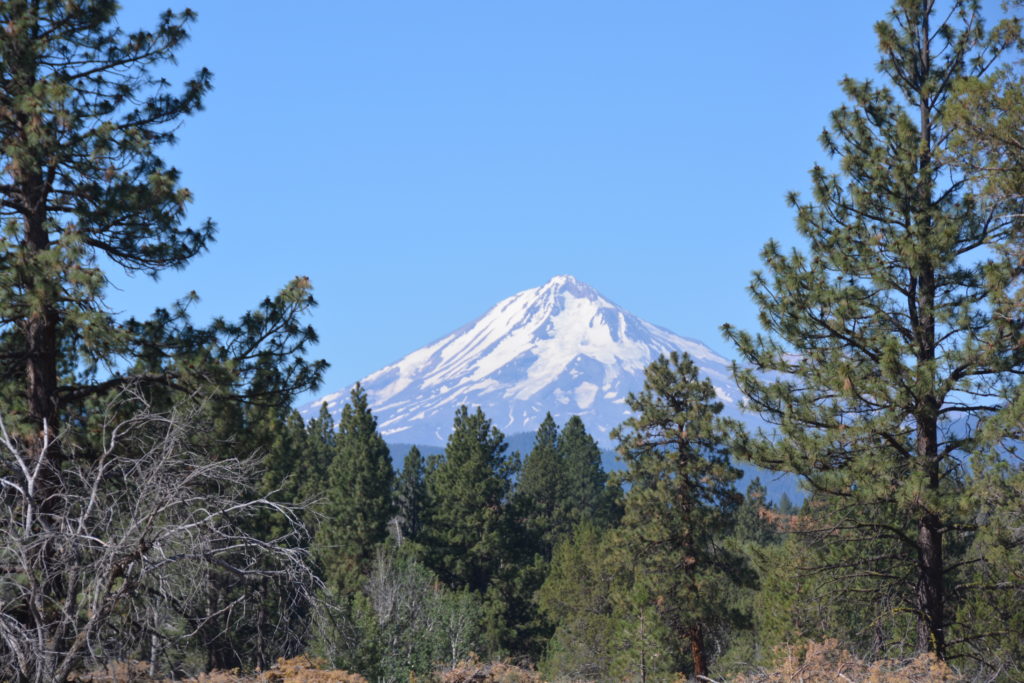
Our drive along back dirt roads in the national forest towards Mt. Shasta provided us with stunning views at every turn, it’s snow-capped peak with three distinctive glaciers (which have doubled in size since the 1950’s!) and it’s slightly shorter sister volcano named Shastina.
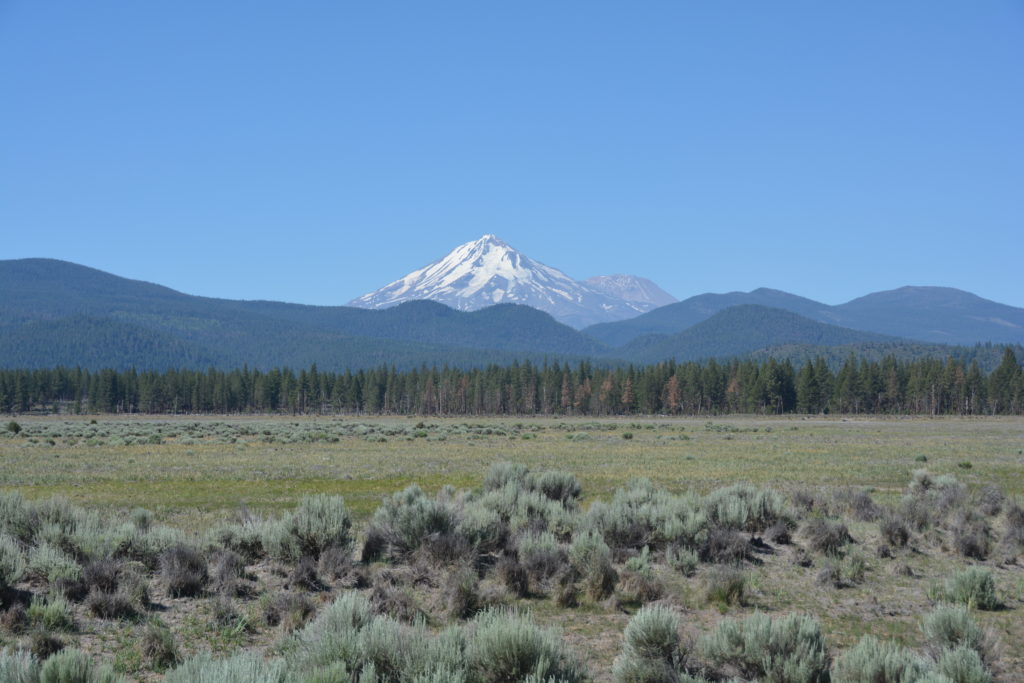
In the town of Mt. Shasta, a cool little support town for all those who want to venture up on the mountain itself, we bought supplies and enjoyed lunch at a Mexican restaurant before following the long winding road up the mountain’s slopes to the end at 7,800 feet. From this site of the first ski resort on the mountain (it was wiped out by an avalanche in 1978 and moved to a safer locale) we watched as hikers donned their gear and began the long trek up the steep slopes to reach the summit. It’s a long tough climb attempted by thousands of people every year but only about half of them make the summit.
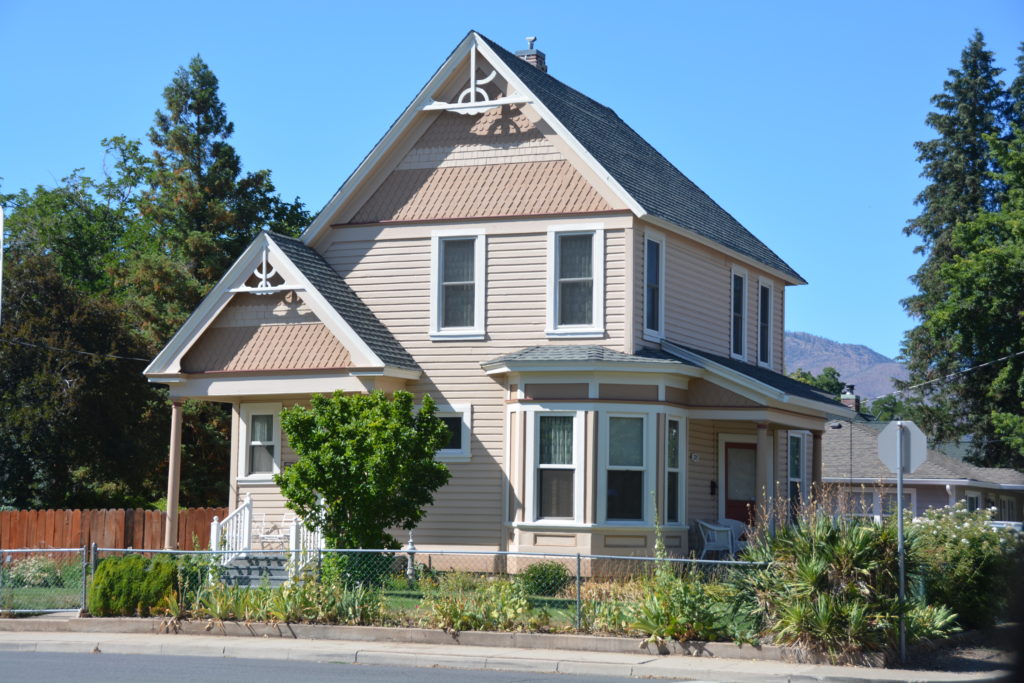
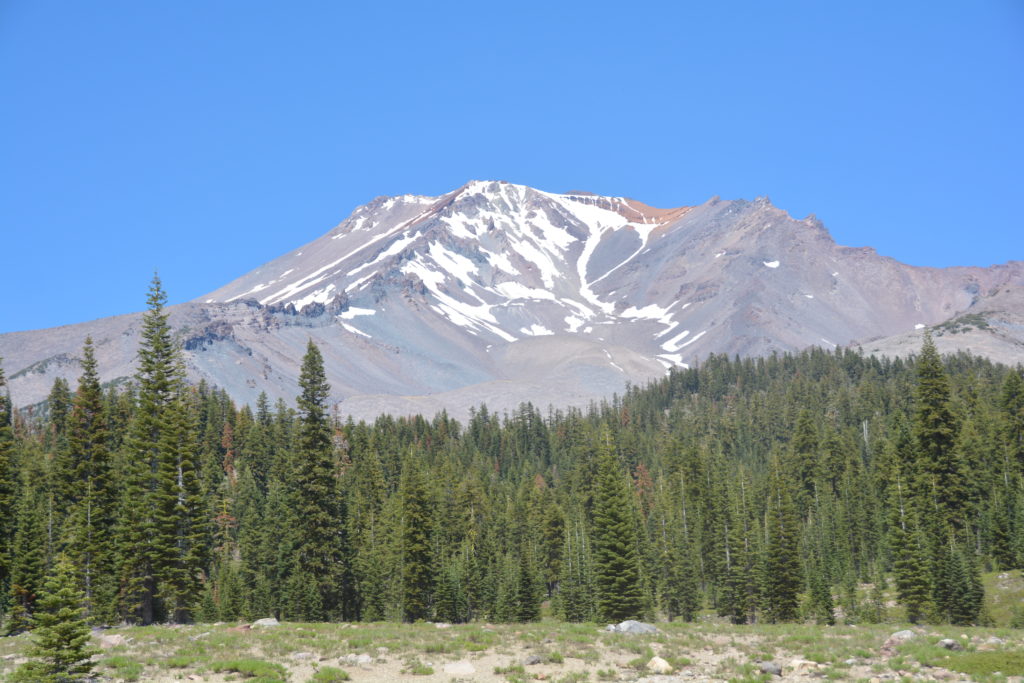
Having been totally smitten by Mt. Shasta, and deciding that if we were to live in the northern reaches of California it would be within eyesight of this wonderful landmark, we headed north and then west on Highway 96 through Klamath National Forest and camped on the banks of the beautiful Klamath River at the bizarrely-named campsite called Tree of Heaven. We couldn’t pick the tree itself but had a refreshing swim in the fast-moving river which helped cool us from the stinking hot mid 90°F/mid 30°C weather.
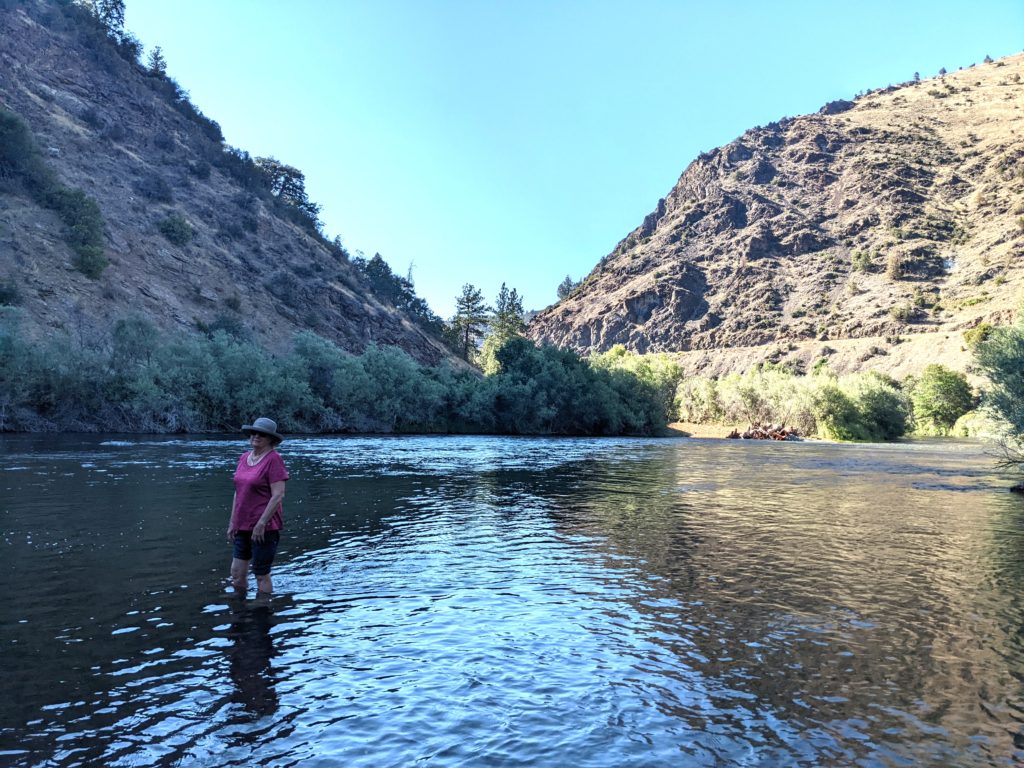
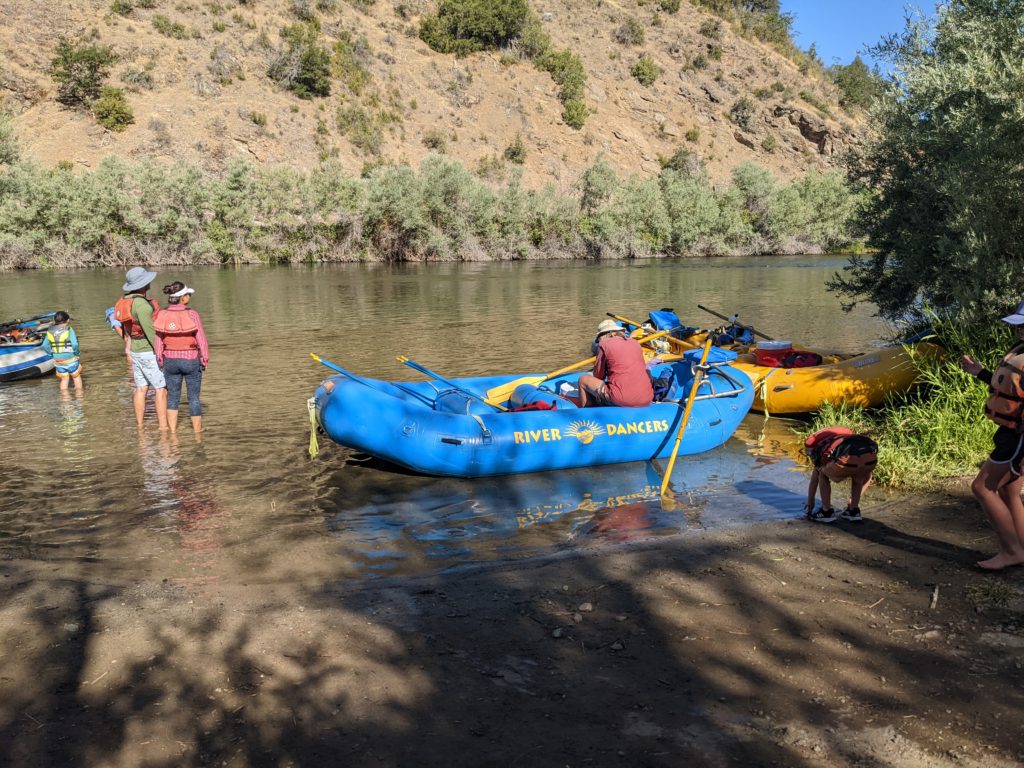
It turns out Highway 96 and the Klamath River had much more to offer as the next day we used one to follow the other through the deep canyons, around countless bends and past a few quirky little communities which clearly valued their unique isolated lifestyles and beautiful settings.
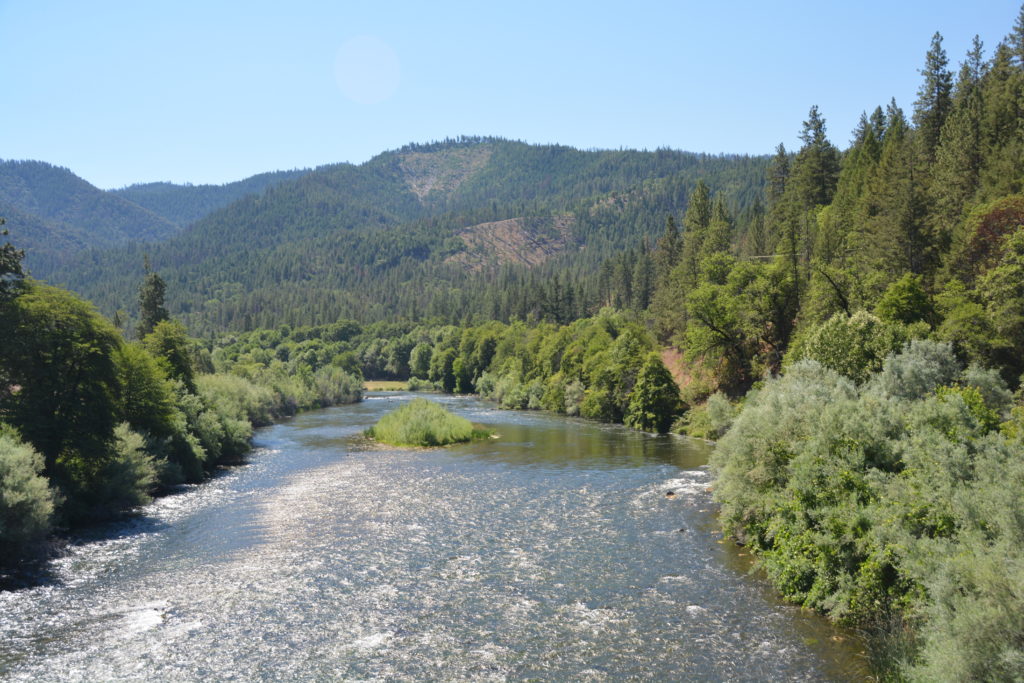
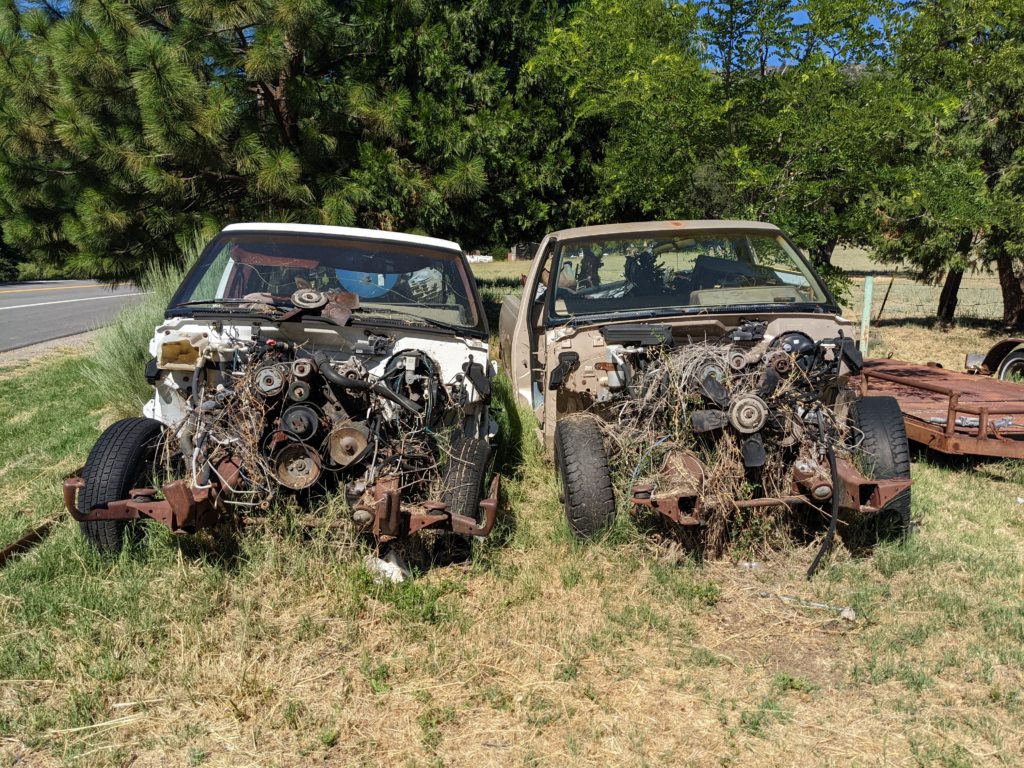
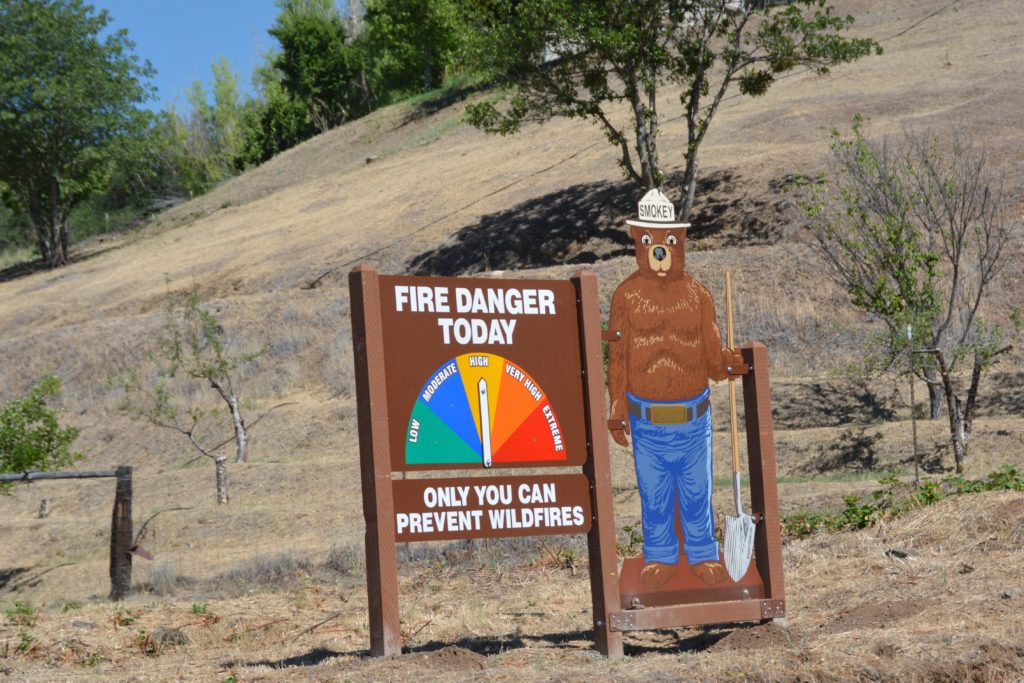
In the 1940’s and 50’s this area of northern California and southern Oregon started a movement to form a new state in the US, to be called Jefferson, presumably to help preserve their special home and lifestyle. They even adopted their own flag which was seen flying all along the drive and painted many signs saying ‘No Monuments’ which was their way of saying there are no monuments around here so no reason to stop and gawk or take pictures. Men seemed to compete for the longest and scraggliest beards. It’s a special place with proud people living there.
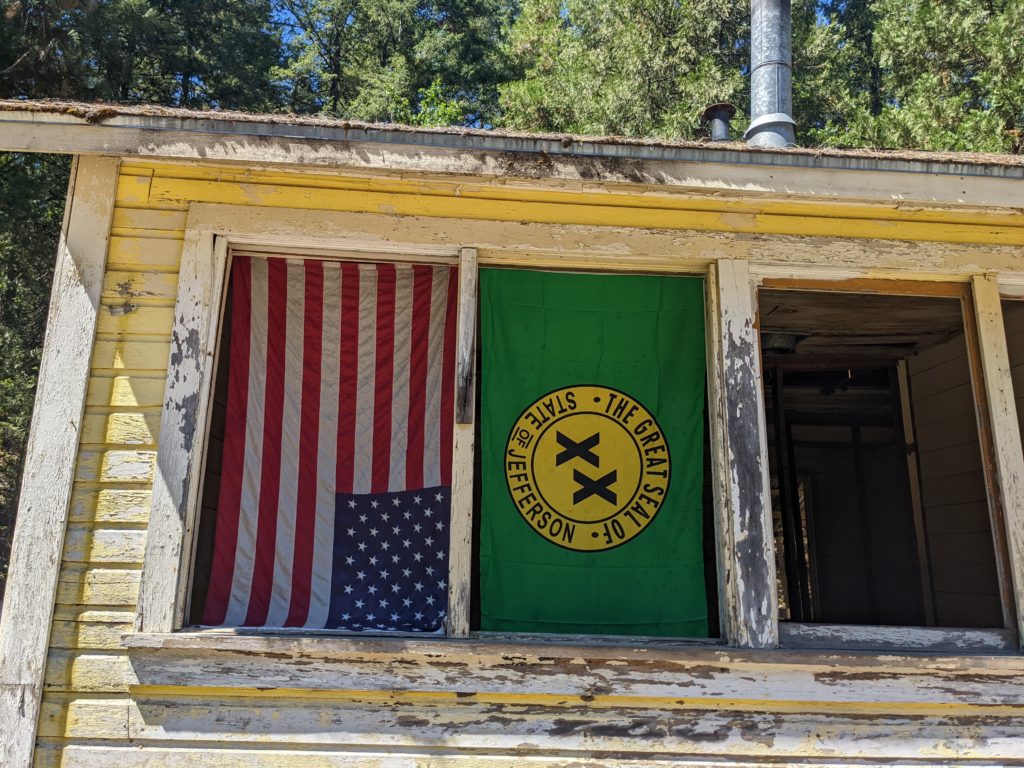
We arrived at the largest community on the Klamath, called Happy Camp, and turned north on a winding road up and over the Pacific Coast Ranges. Immediately we dove headfirst into the aftermath of a devastating forest fire that swept through this mountain range in 2021 and took everything in its path. Amongst the endless mountains of standing burnt match sticks that used to be beautiful pine forests we saw the human impact – people living on their homesite in caravans, their home completely gone, businesses burnt beyond recognition, infrastructure ruined. It was a very sobering experience.
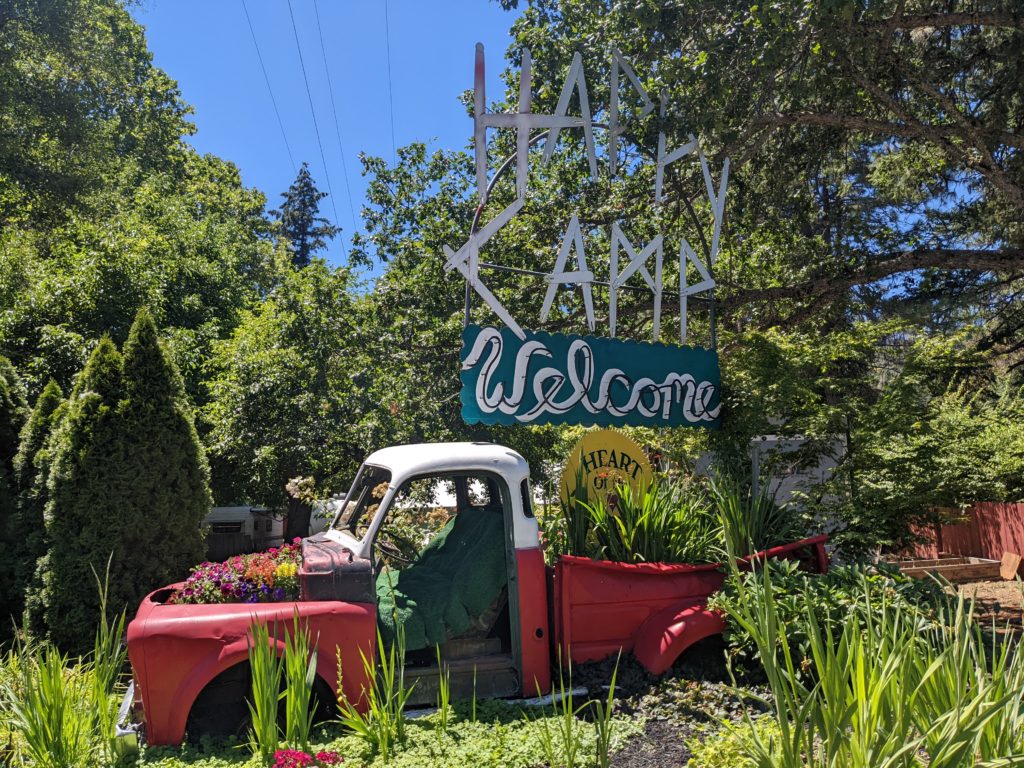
Down the other side of the mountain we passed out of the burn zone and briefly into Oregon before heading south back into California and traversing the Six Rivers National Forest. We camped the night on the Middle Fork of the Smith River, high steep mountains all around, a beautiful refreshing swim to erase the heat of the day. Spectacular stuff.
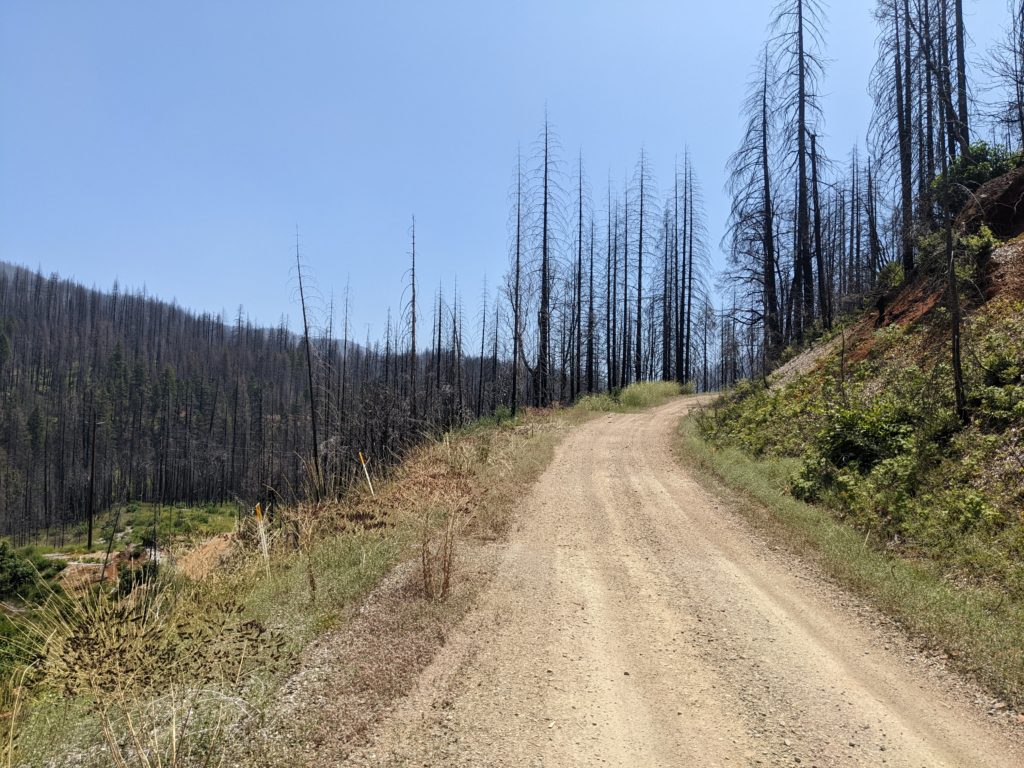
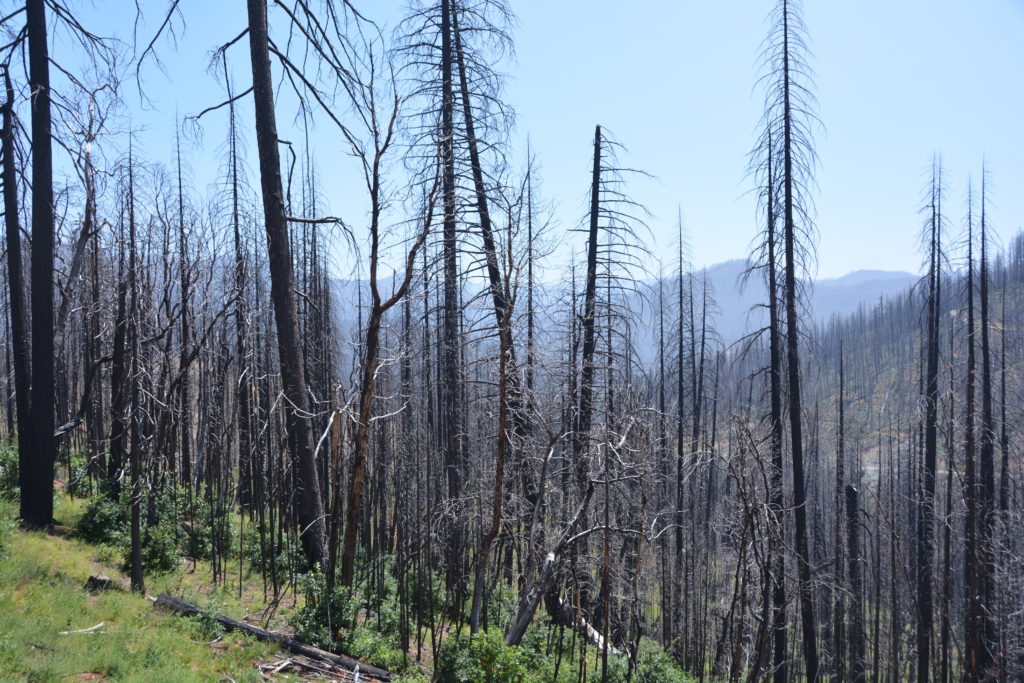
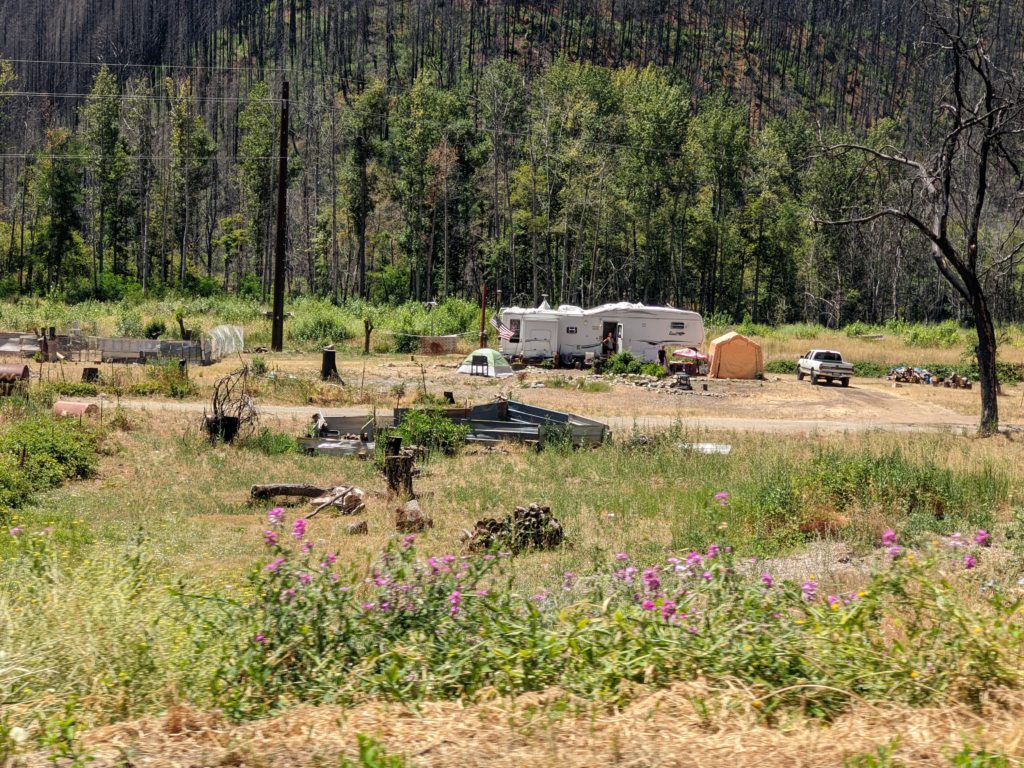
But if you are in this far north-western corner of California then all roads lead to the redwoods. The California Coastal Redwoods, some of the largest and oldest trees in the world, live along a strip of land following the northern California coast. We spent the day walking amongst these magnificent trees in the national park near the coastal town of Crescent City.
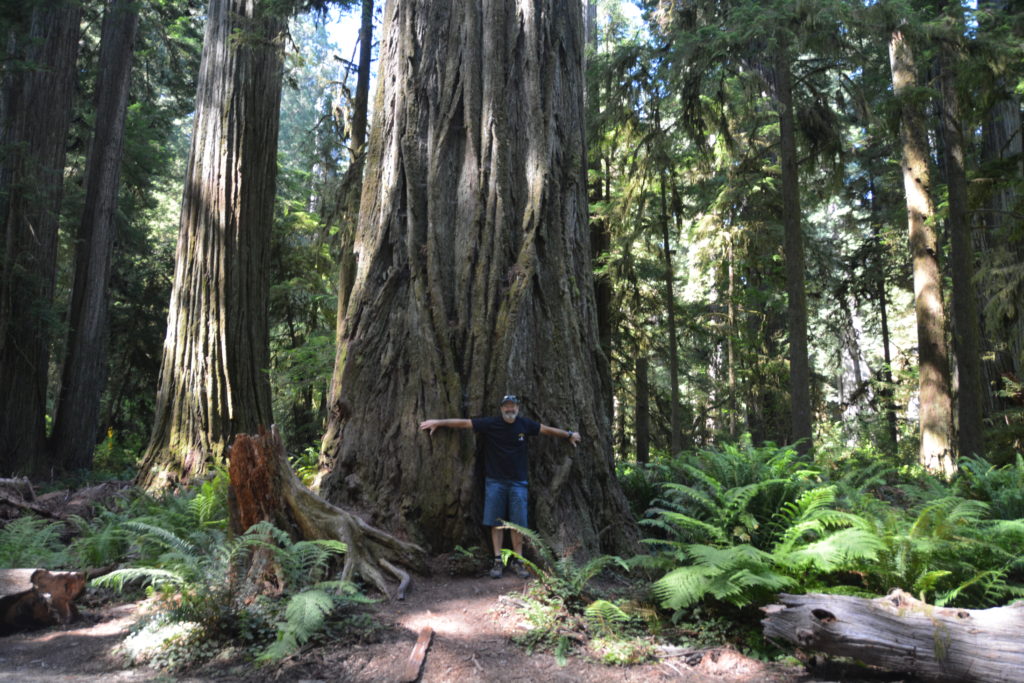
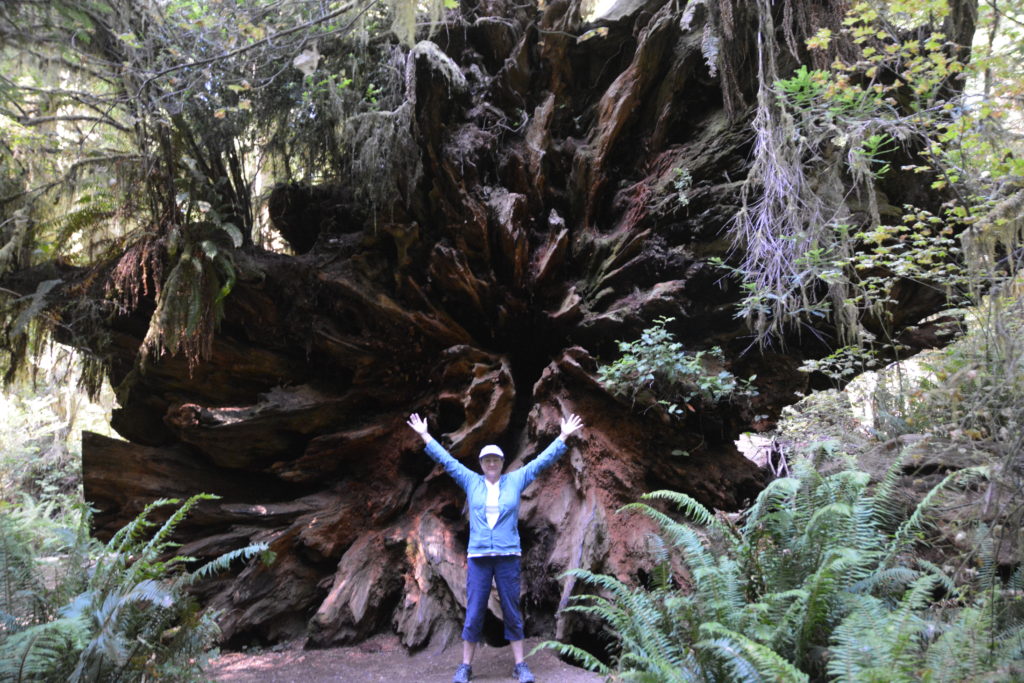
Coastal redwoods can live up to 2,000 years, towering over 350 feet (100 metres) their distinctive red-grey bark sometimes twisting around their massive huge trunks. On one of the bigger trees I took an unscientific 29 large steps to circumnavigate the trunk, probably somewhere around 100 feet. We ended up with crook necks looking skyward under their branches.
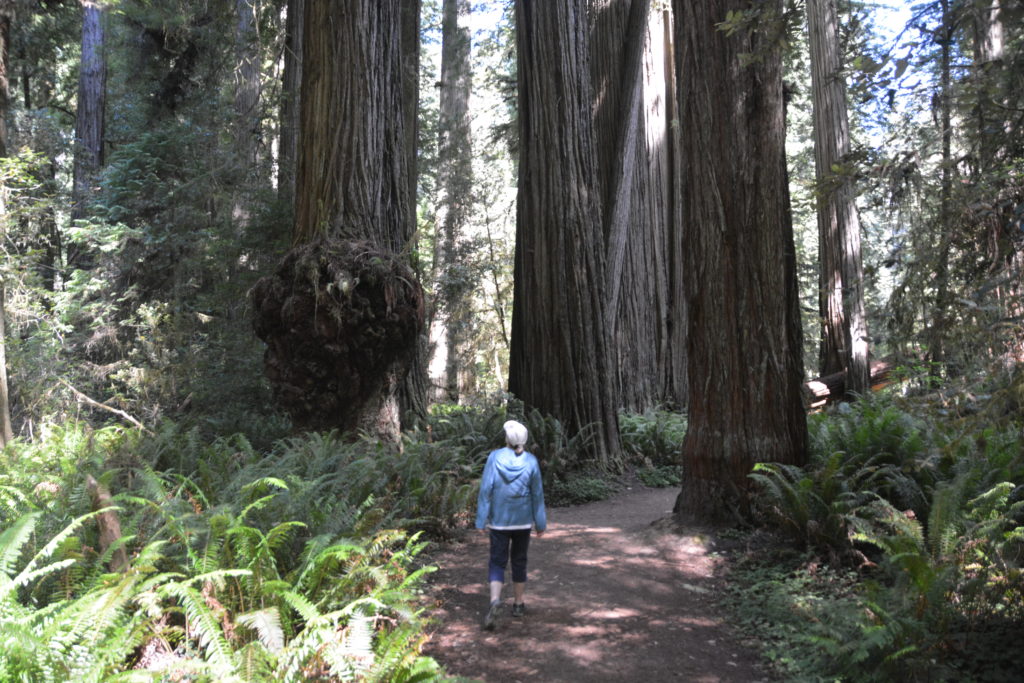
Walking amongst these gentle giants was a truly special experience, reminding us of our insignificance when trees we passed were here almost before history began. Kids excitedly climbed on these huge fallen logs, old people with walking frames, people from all over America, countless languages being spoken amongst us all. It was wonderful, pacifying, humbling and very special.
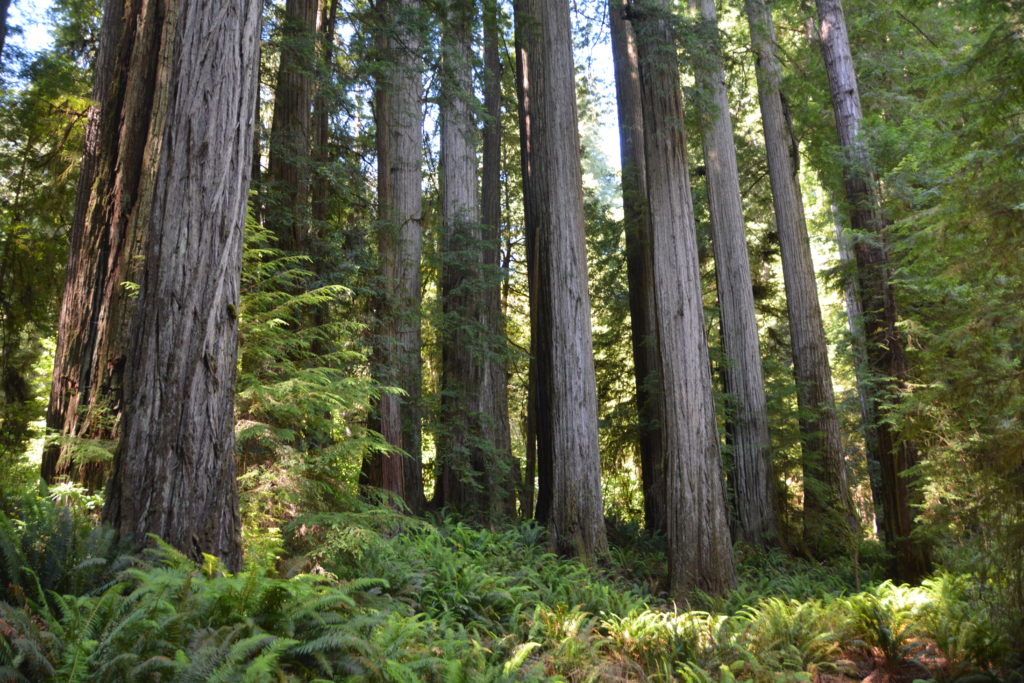
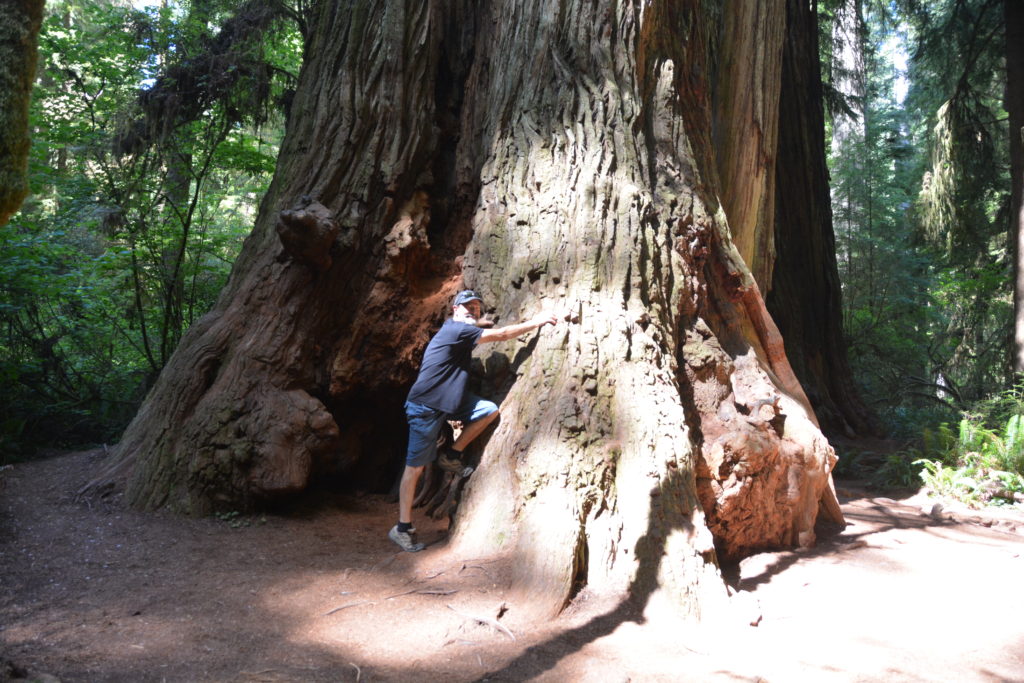
The highlight of the day was the aptly named Grove of Titans, standing tall at the end of a one mile walk, massive in their girth, infinite in their height. We agreed it was impossible to photograph their awesomeness but easy to feel it as we walked amongst them. Everyone needs to visit these trees at some time just to get a grip.
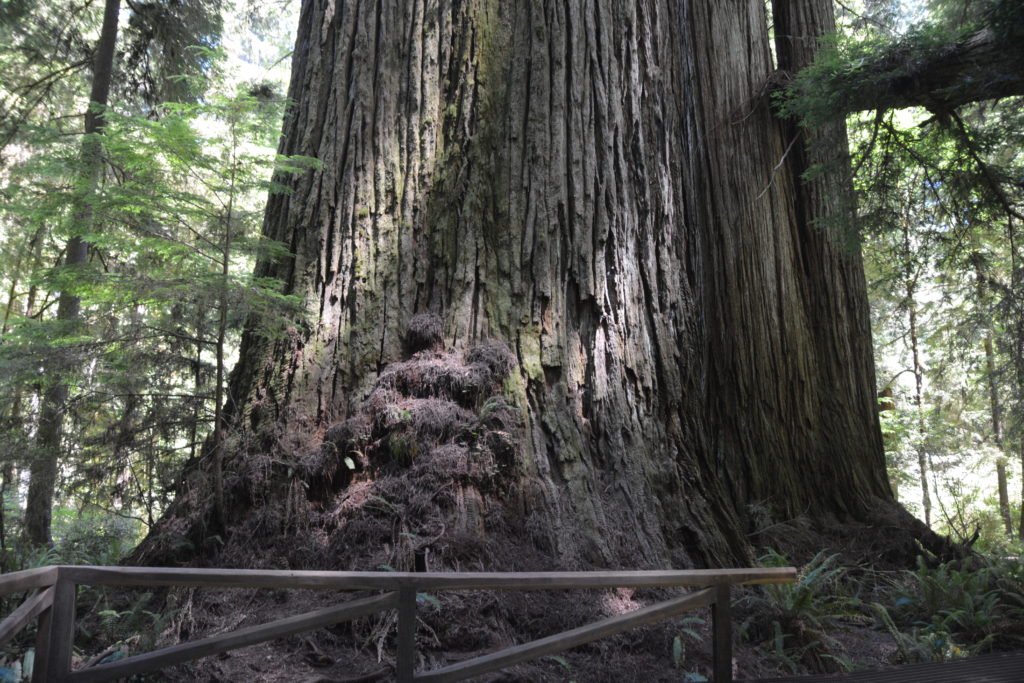
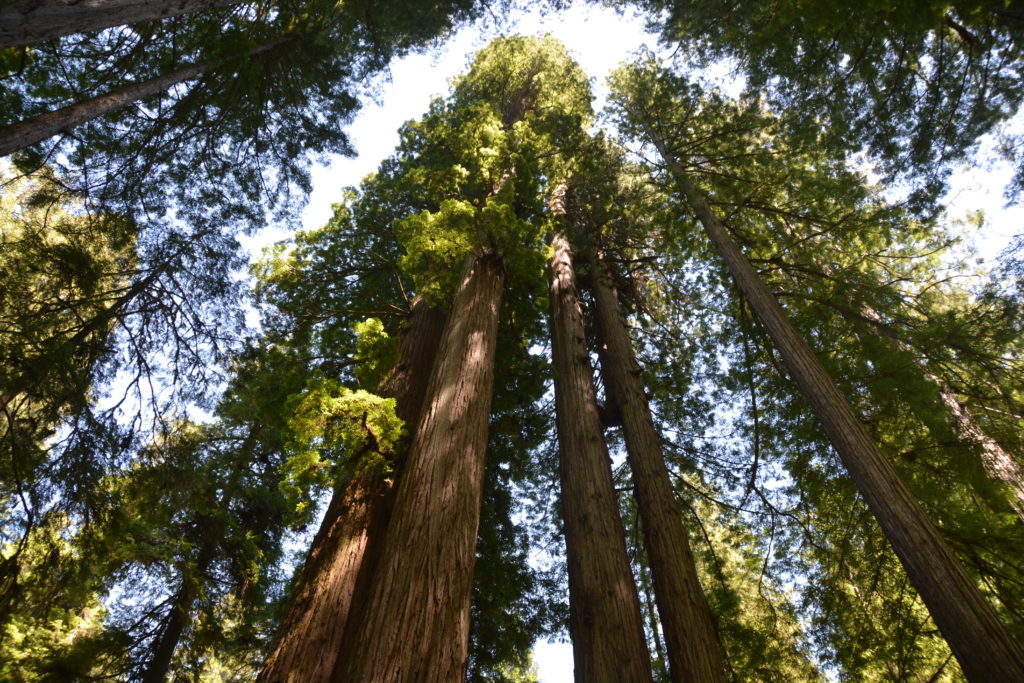
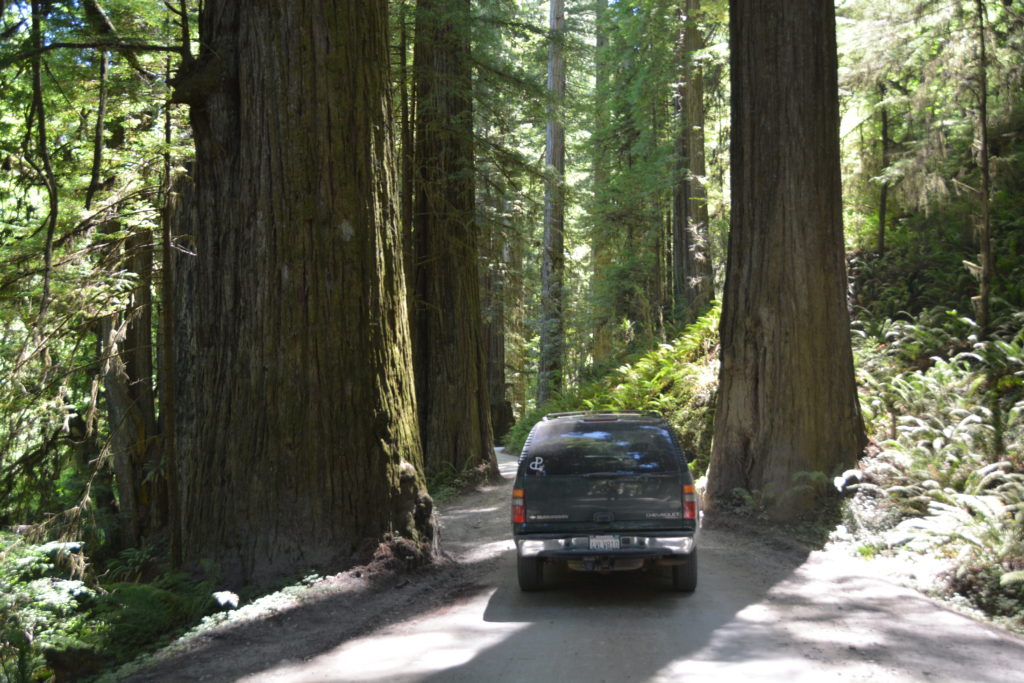
After camping that night near the mouth of the mighty Klamath River, which we had swum in a couple of days before, we detoured down to the mouth itself and enjoyed a fabulous morning walking on the beach, watching the fishermen cast for salmon and a huge group of seals loll about on the sand bank. Great stuff.
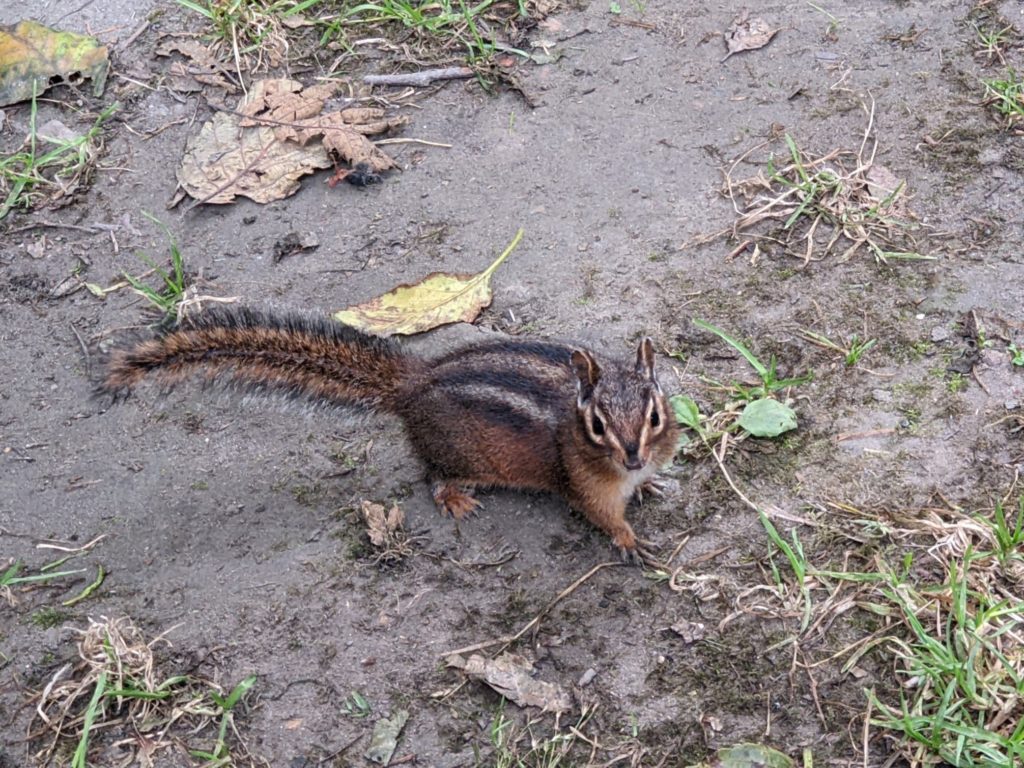
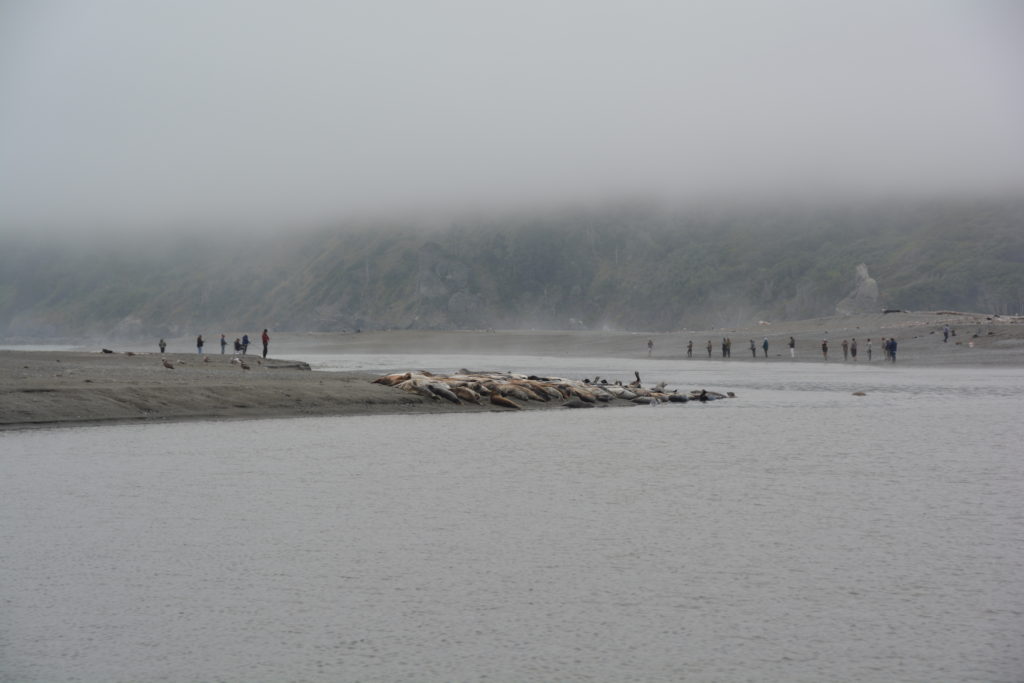
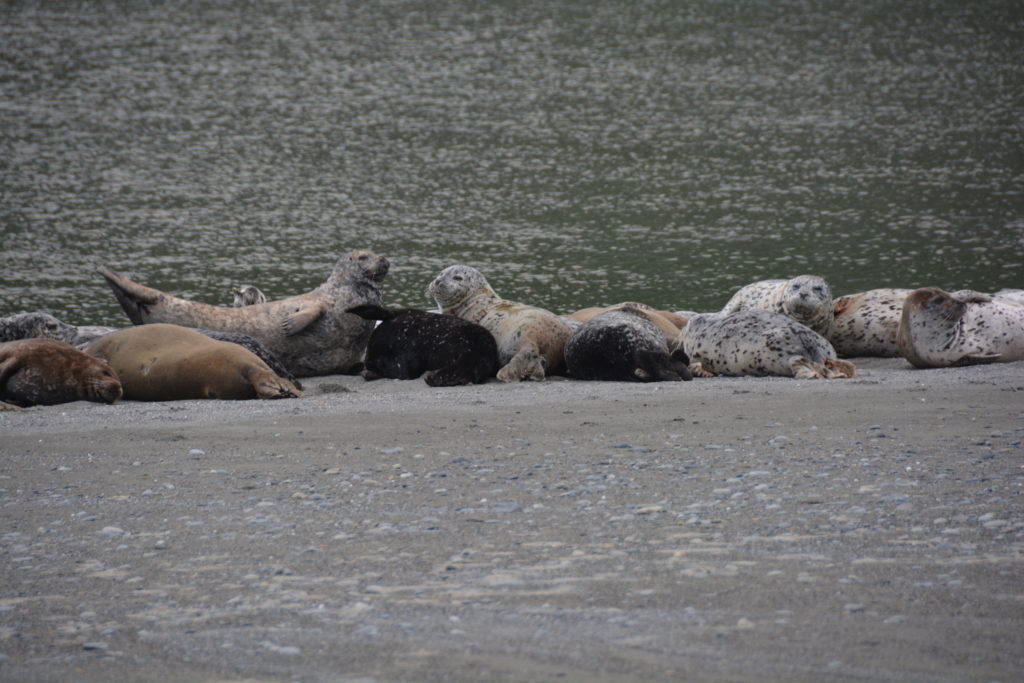
But fortunately for everyone the giant redwoods just keep on giving with forests and groves dotted along the northern coast as we headed south. Fossil evidence indicate that ancestral redwoods thrived when dinosaurs walked the earth over 145 million years ago. We stopped at one monster called The Big Tree which is estimated to be 1500 years old.
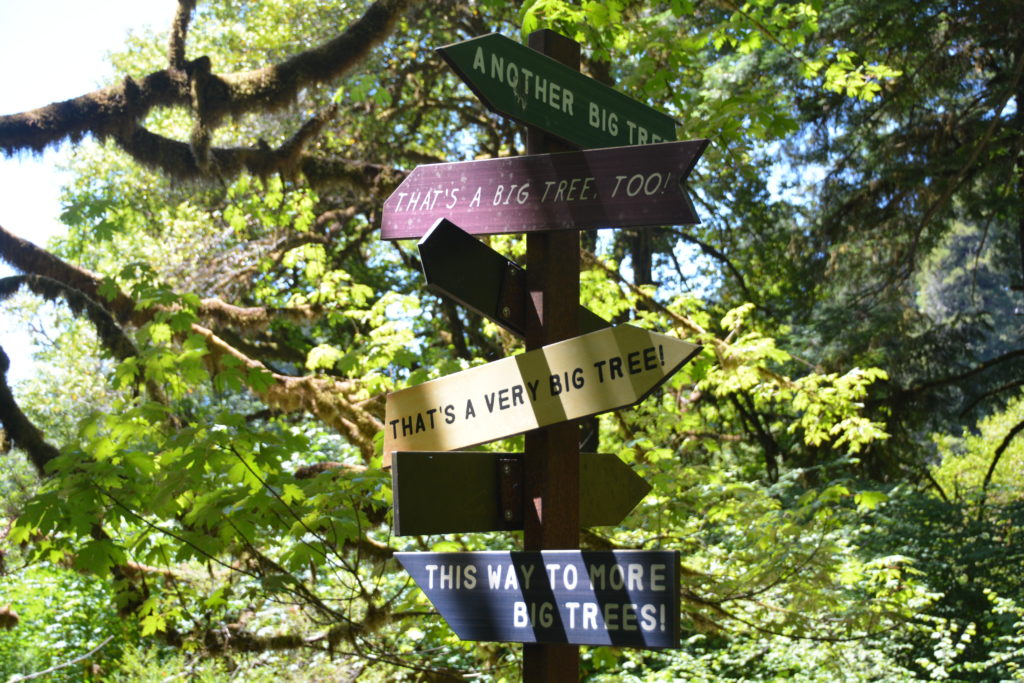
The fog stayed thick all day across the deep grey sandy beaches and coastal forests, adding an eerie atmosphere to the unreal experience of driving and walking amongst these natural wonders. After making slow progress down the coast we camped in Humboldt State Park amongst the tall and straight second growth redwoods that feature here.
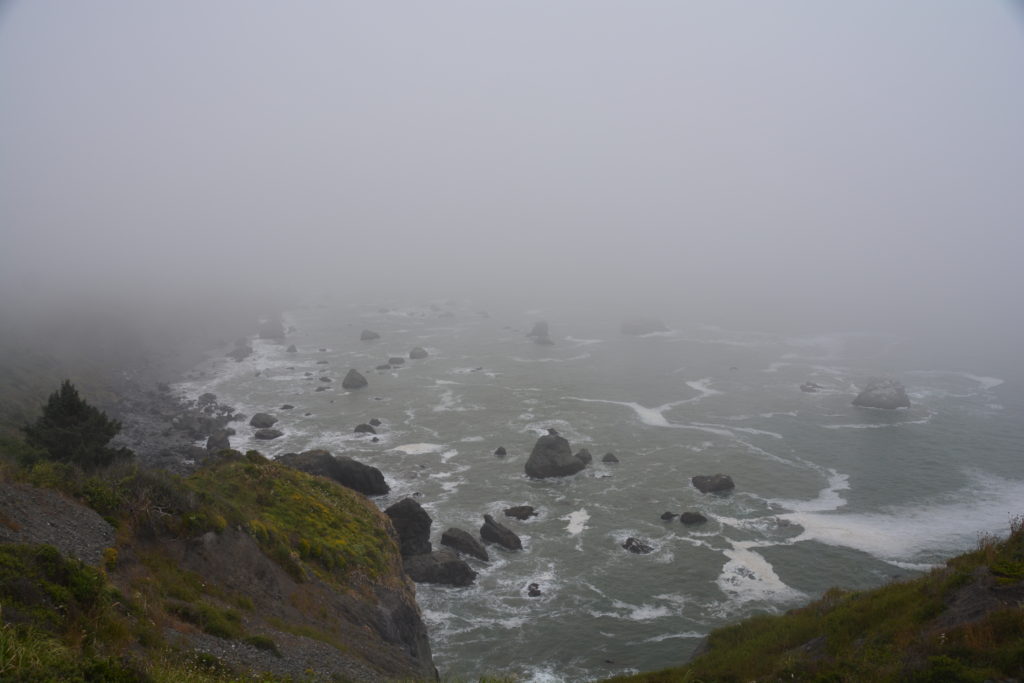
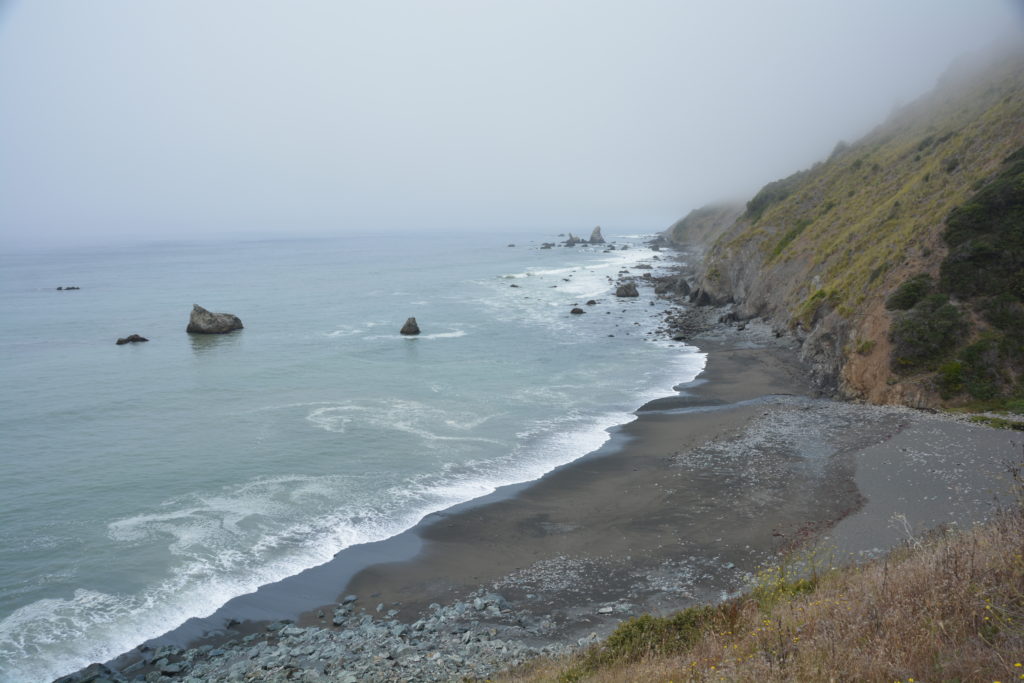
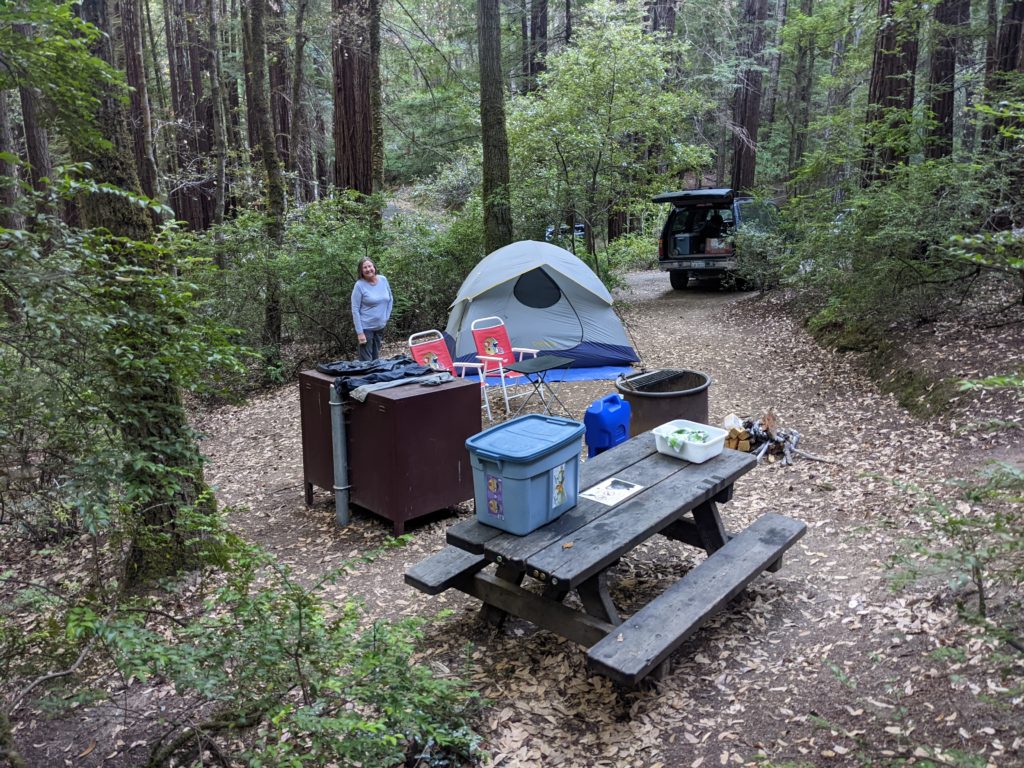
But our time on this short loop of the far northern corners of California was nearing an end as we needed to get back to the family home for other commitments. We drove up and over the mountains that run along the coast of California, a beautiful winding road that didn’t have a straight bit to it for more than 40 miles.
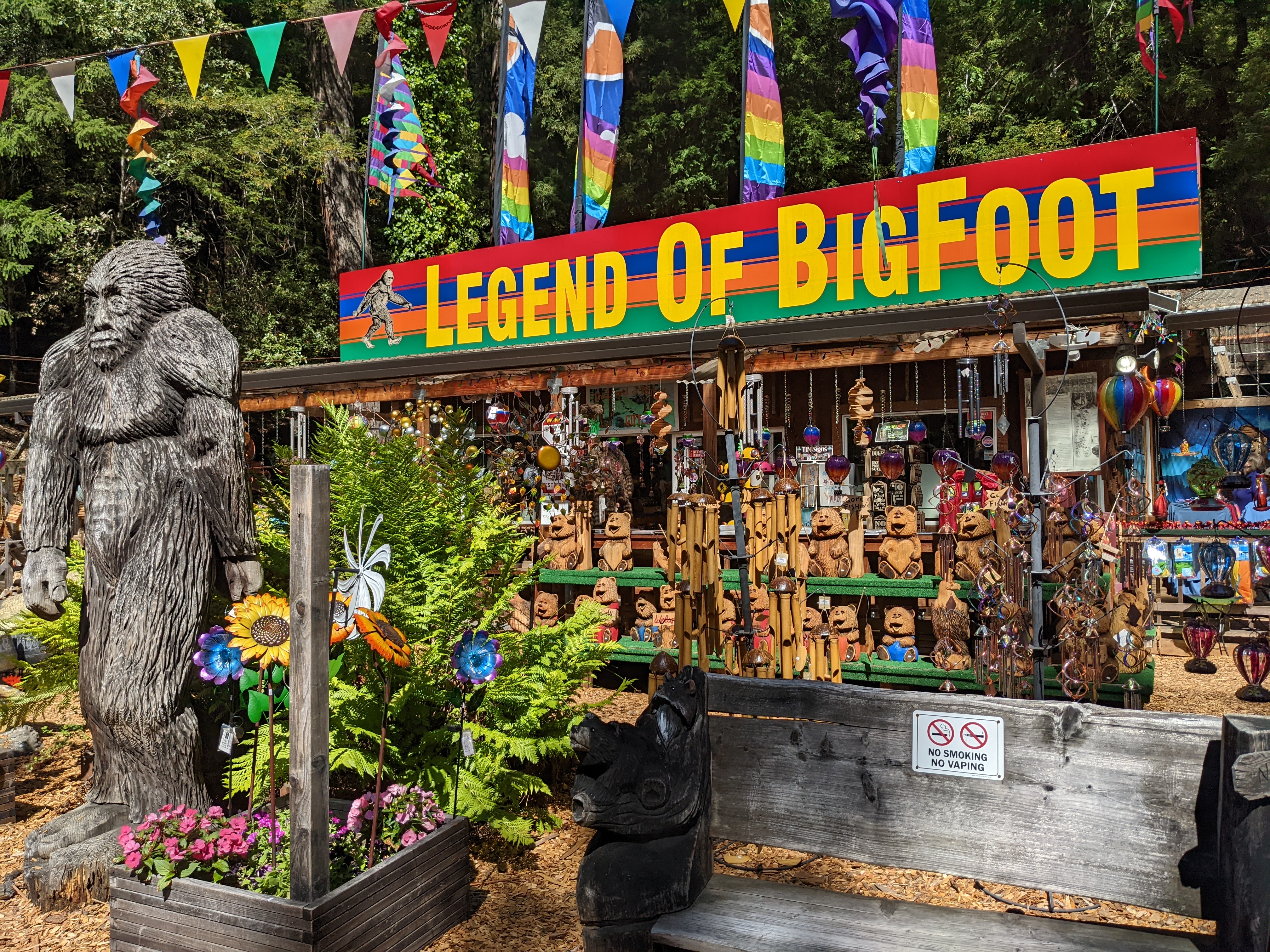
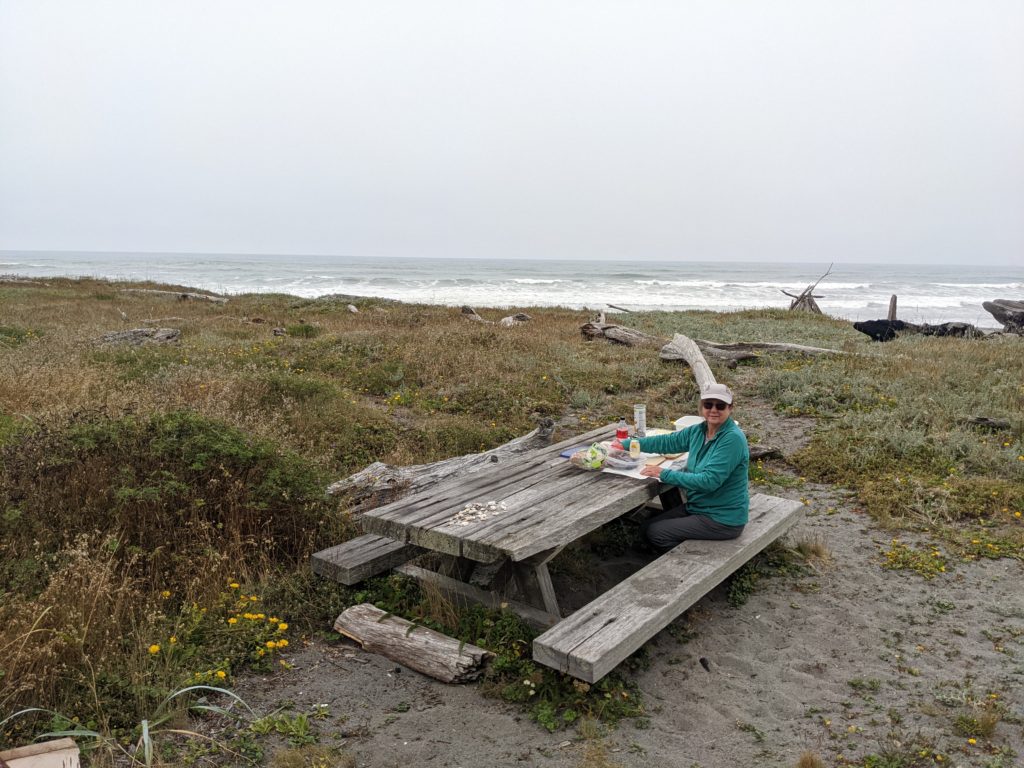
And the coast featured more of the same, stunning cliff-lined shore, jagged rocks rising above the water’s level, the occasional beach tucked into a picturesque bay, cold fog blowing all around us. It was a fabulous drive down what is called the Lost Coast, only ending when we camped near Salt Point, about 100 miles north of San Francisco.
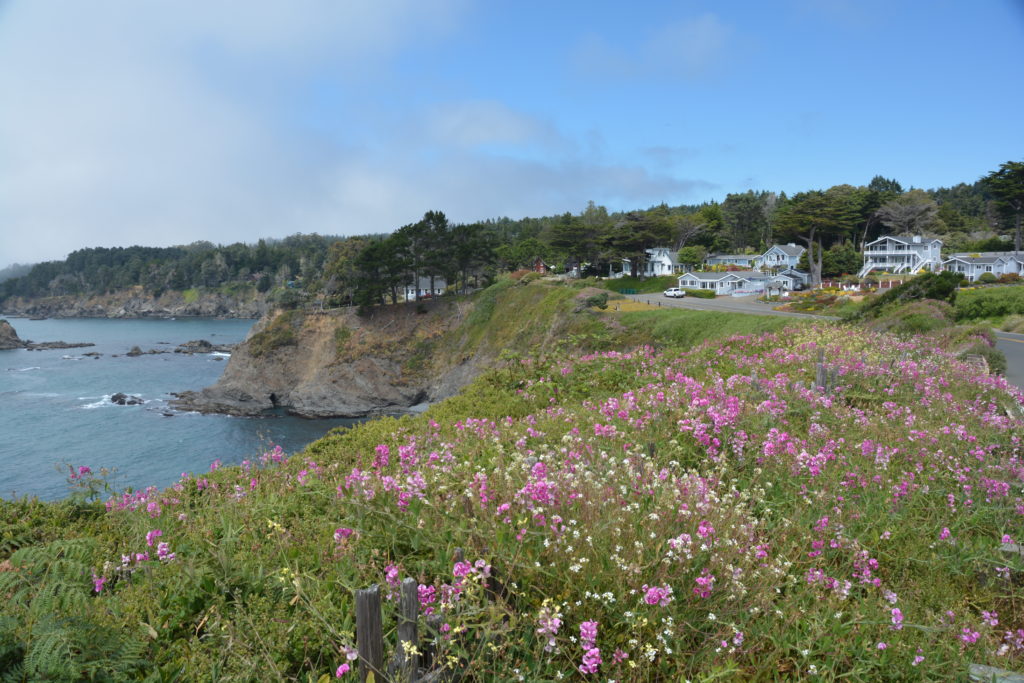
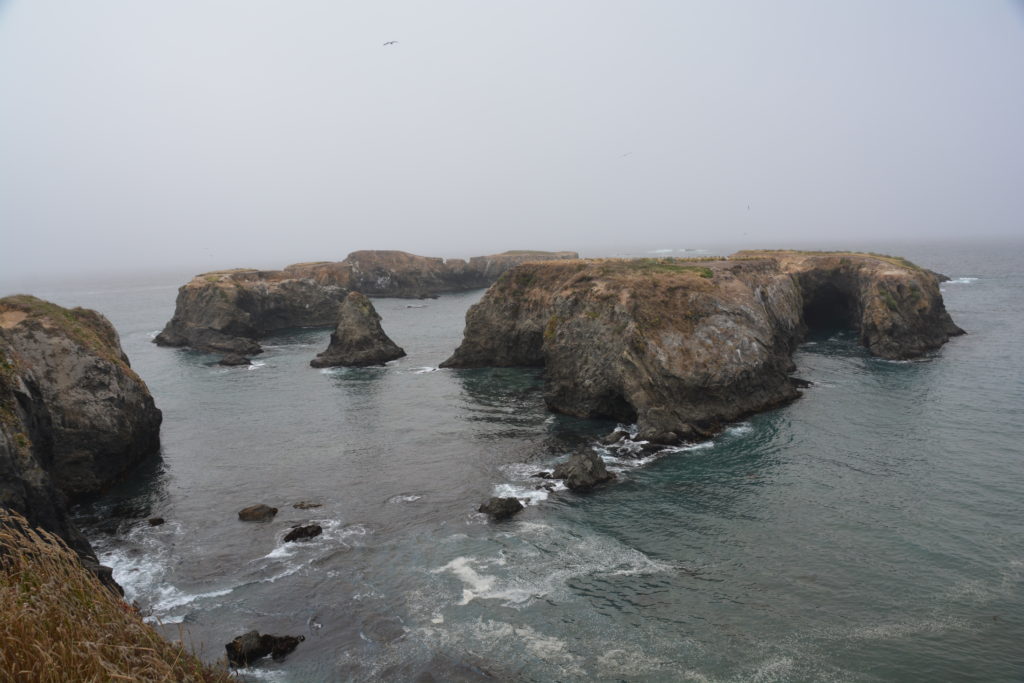
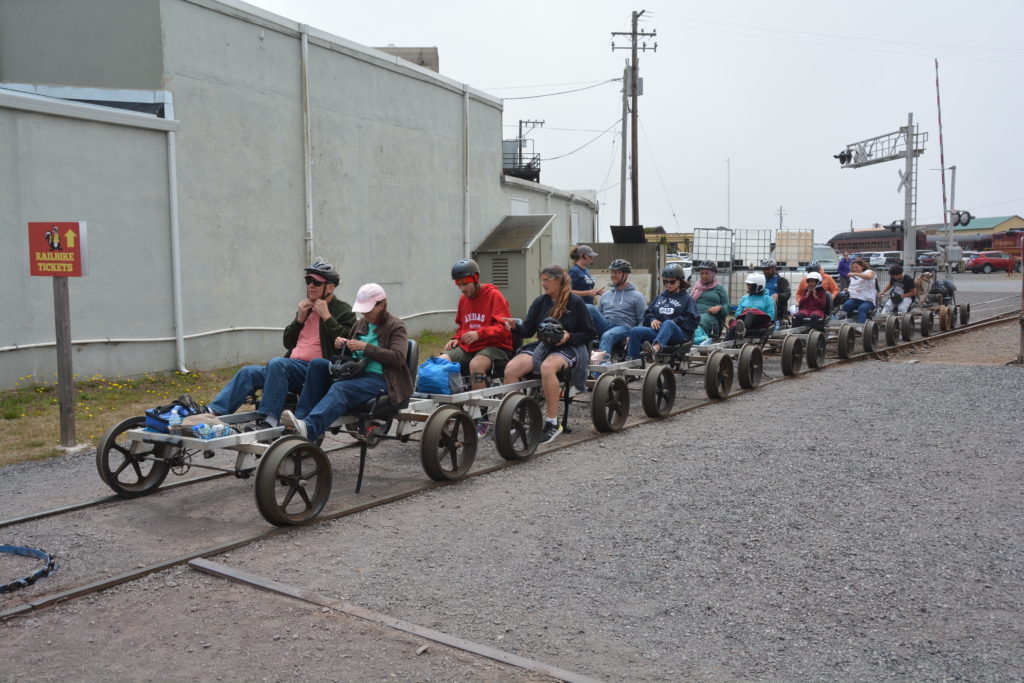
The following day we completed our loop by tracing down the coast, fog low and thick sometimes blinding our view, stopping for grand scenes of seals and pelicans passing time on the banks of the Russian River, lunch at Muir Beach. We crossed the famous Golden Gate Bridge, still shrouded in fog despite the late afternoon, and then headed down to our family home. Just wonderful.
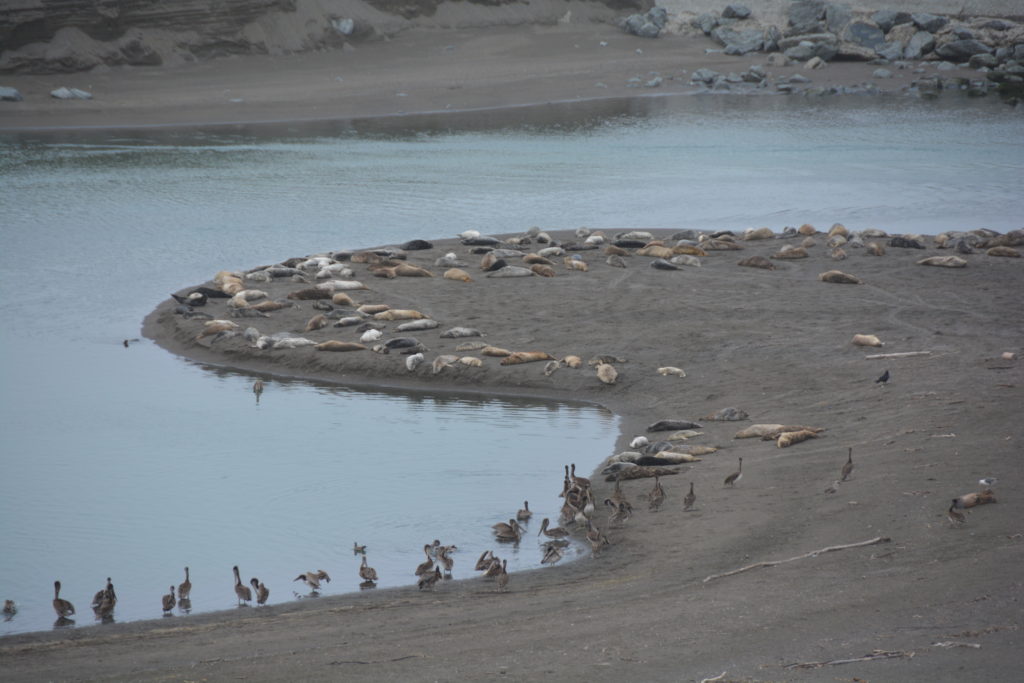
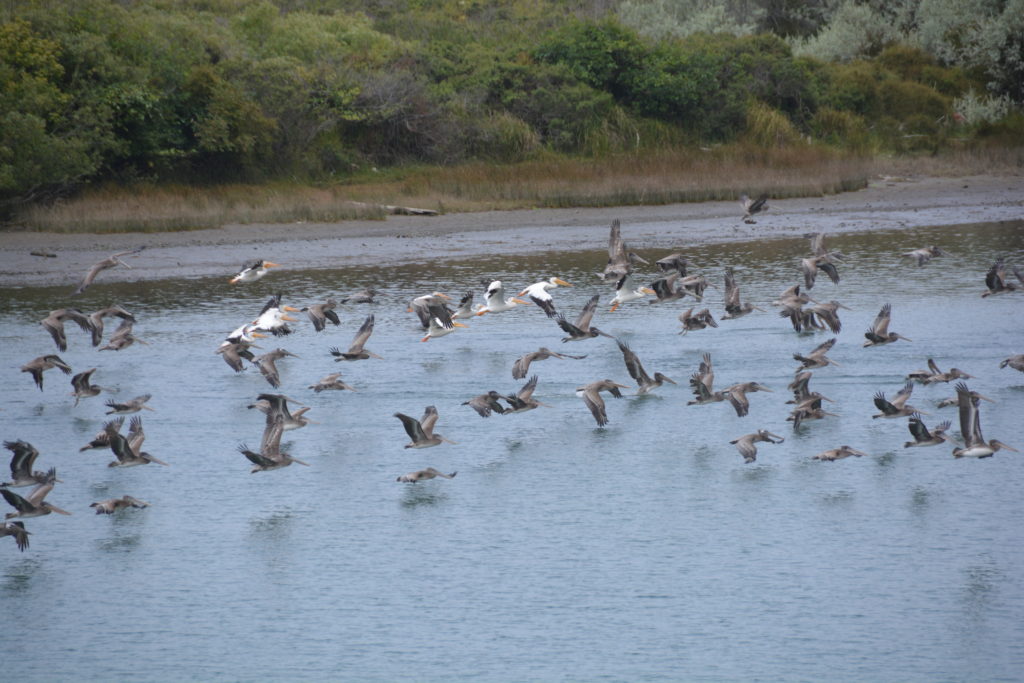
A final comment. Even though I was raised in California I left when I was 21, a long time ago, and while we have returned regularly it has mainly been to visit family and friends. Exploring the large backyard of my childhood never really came into it. But this trip has reminded me what a magnificent place California is, stunning steep mountains, the snow-capped volcanos, almost endless green forests, crystal clear rivers, quaint little towns, tall ancient redwoods and a fog-shrouded coast. California, we loved it!
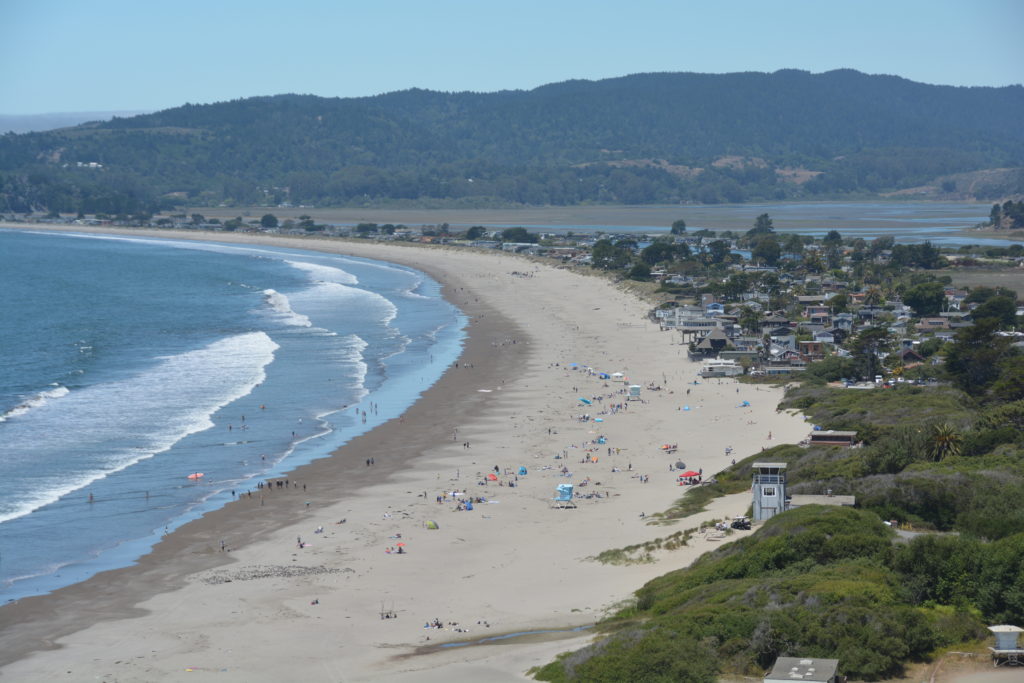
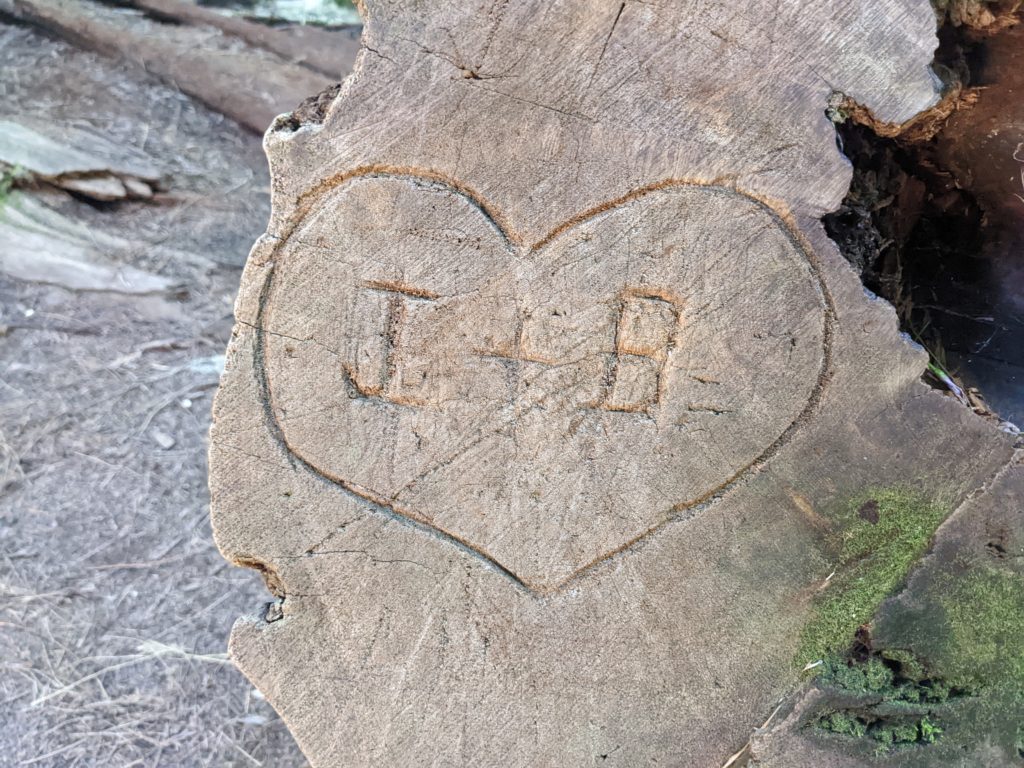
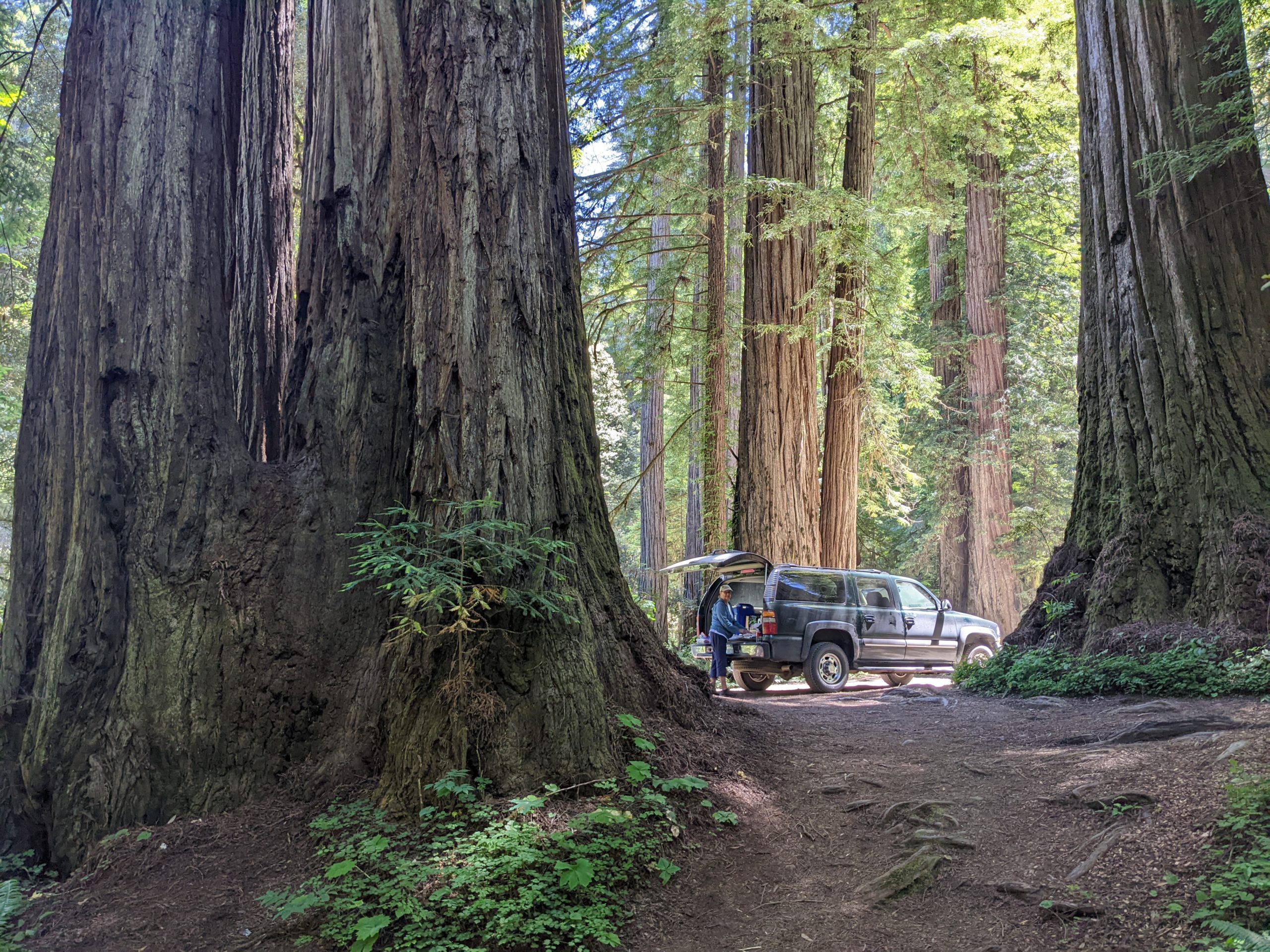
Comments
Mt Shasta and the redwoods — No Comments
HTML tags allowed in your comment: <a href="" title=""> <abbr title=""> <acronym title=""> <b> <blockquote cite=""> <cite> <code> <del datetime=""> <em> <i> <q cite=""> <s> <strike> <strong>